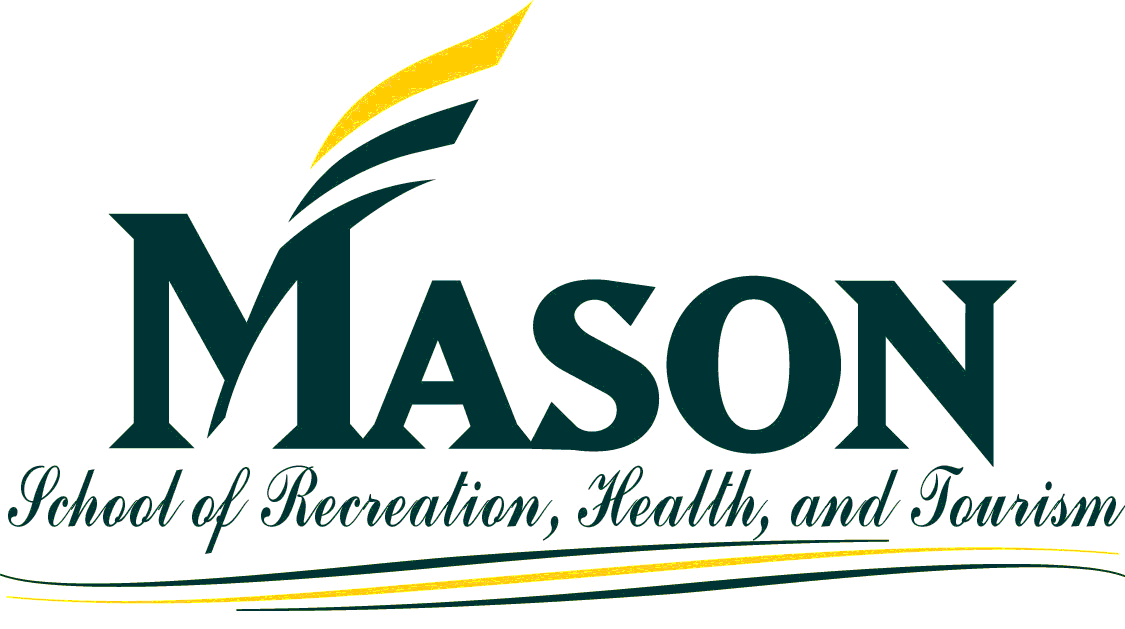harpenden town council procurement strategy guidance on best value for the procurement of services in more simplistic terms it is
HARPENDEN TOWN COUNCIL
PROCUREMENT STRATEGY
GUIDANCE ON BEST VALUE FOR THE PROCUREMENT OF SERVICES
In more simplistic terms it is suggested that the Council’s Standing
Orders on Contracts is the foundation upon which a Procurement
Strategy should be based. Standing Orders lay out the process by which
the Town Council will acquire the supply of goods or materials or the
execution of works. It provides details in respect of the tendering
procedures and the thresholds which apply for the purchase of works,
goods, materials or related services.
Principles of Good Practise Procurement
=======================================
The Principles of Good Practise Procurement is provided to enable
those involved in a Best Value Review process to understand and decide
on the different options that might be used to deliver the service.
Best Value may not always mean the cheapest. Quality products for
services that may cost more initially in the longer term may prove to
be a better option and thus better value. As such, when considering
good procurement practise it is necessary to take into consideration:
i.
The strategic longer term approach – examining the objectives of
the service as well as the extended projected costs.
ii.
How the service will be delivered in the future to achieve the
best standard of performance.
iii.
That all realistic alternative options have been explored and that
there is evidence to support the decision that is made.
iv.
There is clarity about the overall specification and the outputs
and outcomes that are expected or sought. Review related services
and activities together so that the scope for improvement can be
maximised and the cost of achieving improvements is kept to a
minimum.
v.
The scope for cross agency work is explored.
vi.
There has been research and consultation with the market to
establish what the private and voluntary sectors, customers and
staff expect from the service and their considered required
outputs and outcomes.
vii.
Whether to continue providing the service in-house, in partnership
or to use external providers, by effectively appraising the
options.
viii.
Seek and encourage innovation to discover gradual changes and
improvements in quality performance and costs.
ix.
Seek appropriate legal, financial and other specialist advice
early in the procurement process.
x.
Recognise and manage risk, account for market trends, assess and
recognise the present worth of assets and recognise the commercial
aspects of contracting.
Procurement Options
===================
There are a number of options which need to be considered which
reflect the principles of good practise. Any decision about what is,
or is not going to be Best Value service must, therefore, be made in
the context of:
i.
The Town Council’s long term objectives and cross-cutting policies
ii.
Relationships between the local Council and other organisations
iii.
Relationships across services within the local Council
iv.
Knowledge of the views and requirements of local residents and
other stakeholders
v.
Knowledge of the achievements of other service providers and the
market
vi.
The long term impact of decisions (eg financial and environmental)
vii.
The local Council’s legal duty to secure Best Value
It is suggested there are seven broad choices of service provision
options. These are:
i.
Pull out
ii.
Improve in-house service delivery
iii.
Joint Ventures – joint commissioning/partnerships
iv.
Market test
v.
Externalise
vi.
Substitute
vii.
Hybrid
In order to proceed it is, therefore, necessary to decide which option
should be carried out. It is suggested that as a simple exercise in
determining the appropriate methodology that the following flow chart
be considered.
Should the Council be responsible for this activity now/in the future
NO
Pull out or Substitute
YES
Is there a policy reason why the Council must perform this activity
YES
In-house improvement of core policy
NO
Is there evidence that the Council is successful and competitive at
this activity
YES
Improved and improving in-house provision
NO
Can the Council make the necessary in-house changes
YES
Use market testing to challenge improvements
NO
Use outside resources to achieve the Council’s objectives.
Externalise, agreements, hybrid options
Implement
Monitor
Assess
Review
Pull Out
When considering future investment in services, good or materials it
may be more appropriate for the Council to pull out altogether.
Pulling out of a service or activity may be appropriate when:
*
Services or activities are no longer needed at all
*
The service or activity makes no contribution to strategic
objectives of the Council
*
There is no demand for the service/activity
*
Stakeholders agree that the costs of the service out weigh the
benefits
*
It is hard to justify spending taxpayers money on the service
*
The benefits of pulling out are greater than the costs
*
Useful assets could be diverted to other purposes, or sold
*
An alternative service (internal or external) would meet the
objectives better than the service under review.
In most cases the objection to pulling out is that the Council is
subject to statutory duties to provide the service. Where this
objection is used, the review should go back to the first principle
and ask “What is the Council required to do?” If most of the other
signs still show pull out as the best option the Council should
consider:
*
Substitution, which may achieve the same as pull out
*
Apply to the Secretary of State for relaxation of the statutory
requirements. In this instance a strong case will need to be
advanced.
Improving In-House Efficiency
Even if the most appropriate option is to continue to provide the
service in-house, it is likely that some improvements will be required
particularly where performance management and associated arrangements
are concerned. The in-house approach, is likely to be a viable option
when the review collects evidence that most of the following are true:
*
The in-house option is already delivering economic, efficient and
effective service at a level that matches both local needs and
external comparators
*
The in-house team can make necessary improvements to meet the
Council’s future targets and sustain the required level of
performance and improvement
*
There is no appropriate market for the service and one cannot be
developed
*
The risks and impact of failure are so high that the Authority
wishes to maintain a high level of control over the service or
activity
*
The function cannot legally be delegated to another provider
*
The potential economies of scale or investment offered by other
options are outweighed by transaction and process costs
*
The existing external providers have not been able to meet the
Council’s requirements or are unwilling to participate in future
service developments and re-design.
Improving in-house arrangements is most suitable if:
*
The existing internal service is or close to meeting local targets
and national standards
*
There is no supply market
*
Cost of externalisation is likely to prove to be extremely high
*
High impact if service fails
Improving in-house service arrangements is less suitable if:
*
For existing internal services
*
The need for external investment
*
Active, competitive, market with established suppliers
*
Services easy to specify and monitor
*
Market can be stipulated and developed
Even if the likely Best Value option is to improve in-house service
provision arrangements, it may still be necessary to implement major
changes. Some of the issues that will need to be considered:
*
How can accountability for Best Value service delivery be
effectively delegated to operational managers?
*
How can service standards and improvement targets be defined,
effectively implemented and maintained?
*
How can the performance of other providers be matched or improved
upon?
*
How will the service delivery be monitored and controlled and when
will the service next be subject to full review?
*
How can it be ensured that service managers and staff operate in
an effective way and that they are focussed on achieving
continuous improvement?
In order to reinforce and maintain a continued and demonstrable
commitment to Best Value in-house services the Council should:
*
Maintain client – contractor splits
*
Work through negotiated service level agreements and internal
trading arrangements where appropriate and based on a thorough
analysis of need
*
Ensure that the four C’s approach becomes an important element in
the operational culture of the service
*
Develop a quality and performance culture within the Council and
in a particular service
*
Consistently use established and appropriate management techniques
such as business planning, performance management, activity based
costing, quality systems and the like to keep the service on
target at all times
*
Develop a quality and performance culture within the Council and
in particular within the service, using service quality techniques
aimed at staff involvement and attention to management information
systems.
All these approaches have their costs and benefits and it is important
to balance these and be able to demonstrate the added value achieved.
Joint Ventures
Whether this be through joint commissioning or partnership, the
Council has to determine whether this is the most appropriate vehicle
to achieve Best Value. Where joint commissioning is concerned, the
association ceases once the contract is completed and the desired
result has been achieved. Where partnerships are concerned a longer
term relationship is sought in order to sustain on-going commitment
and achieve longer term aims. These apart, there are many similarities
between the two forms of joint venture. In either case the acid test
for a suitable joint venture is:
*
Services are provided from a single point eg a one-stop shop or a
call centre
*
Participating organisations are willing to bury their separate
identities in the interest of the joint service
*
Financial and other risks can be shared on an equitable basis
*
Sharing resources, staff etc will produce significant economies
and improved quality
*
All participating organisations require the same or similar
service
*
Clear lines of responsibility and accountability are identified.
By the same token the joint venture is vulnerable and less suitable
if:
*
Organisational identities and imperatives are more important than
a seamless service
*
There are no obvious and willing partners
*
Legal or other constraints cannot be overcome
Clearly the key issue in the success of any joint venture is a
challenging environment to develop services. In taking this route it
is necessary to consider the following:
*
Is a partnership approach the best way of dealing with the issue
to be addressed?
*
Do the prospective partners have a clear and shared vision of the
benefits to be achieved?
*
Are the goals of the prospective partners compatible?
*
Is there a genuine commitment from the participating
organisations?
*
Do all parties have a clear understanding of what is required,
both in terms of generalities as specifics?
*
Is there a commitment to open communication?
*
Will the anticipated benefits outweigh the likely costs?
*
Are all the partners in the joint venture clear on the role that
they are expected to take, the resources they will contribute and
how they will account for the success of the service?
Market Test
It is recognised that the market test approach is the one most similar
to compulsory competitive tendering (CCT) and is considered a “half
way” arrangement between improving the in-house provision and
externalisation. It will be the most likely option when:
*
There are doubts about the ability of the in-house operation to
develop and sustain improvements in value for money and service
quality without a market test
*
There are disagreements within the Council whether the in-house
option or externalisation will give Best Value and best results
*
The Council has the skills and resources to put into an effective
market testing exercise
In the first instance it will be necessary to establish whether a
market exists and whether there are external organisations which can
provide the service required. Thus there will be a need for market
testing. It will be necessary to understand the competition process
and identify in the market place there is active competition between a
number of competent and capable organisations who can deliver the
service. It will be necessary to determine the risks which may
necessarily be transferred and whether any organisation vying for the
service is capable of picking up that risk or reducing it.
Where no markets currently exist there will be a need to find ways of
stimulating the market in relation to the particular service being
reviewed. Some ways of doing this are indicated below:
*
Hold discussions with selected public, private and voluntary
sector providers. This is known as soft market testing and, issues
to consider will include – the best means of packaging the
service, whether there is likely to be a service provider who is
able to carry out all the required service or will there be a need
to break it down into more manageable packages, what the size and
scope of these packages might be.
*
Send questionnaires to existing and potential providers to ask how
they could add value
*
Ascertain which other Councils have contracted services from
particular providers and seek guidance from them
*
Consider breaking down service elements and re-packaging them. If
it becomes apparent that a market does not exist in relation to a
particular service, can the service be broken down into smaller
elements that will appeal to different sections in the market.
Such an approach is likely to be more time consuming and will
involve greater supervision and monitoring needs. Nonetheless it
is an option.
*
Hold discussions with providers who offer services in closely
related areas to establish if they could expand into the service
area under review.
*
Approach organisations and associations such as the Chamber of
Commerce, and professional and trade associations to establish if
they know of any new companies looking to break into the service
area under review but, may not feel ready to take on a major
contract.
*
Explore supply markets to establish what service developments are
anticipated in response to best practise, legislation or the views
of service users and consider new combinations of service elements
which the market suggests could deliver Best Value.
In taking this route it is necessary to be aware that it can have an
effect on staff attitudes and morale during the market testing
exercise. If the results of the market test identify the opportunity
to externalise how will staff feel about being transferred after the
failure of an in-house bid?
Externalisation
Service provision in this instance is via external organisations which
compete to do the work. Management and co-ordination is through the
works specification, which describes the work to be done and the
contract conditions that form the basis of the relationship between
the client and service provider.
The review team is likely to suggest externalisation of the service or
activity when there is evidence that:
*
In-house provision is demonstrably poor and improvements are
impossible, unlikely or too expensive
*
The market place offers products which wholly or substantially
meet the Council’s requirements at lower cost than the
alternatives
*
There will be effective competition because there is sufficient
number of potential bidders able to offer the relationship and the
services the Council requires
*
Alternative providers can offer economies of scale, scope and
investment as well as effective management of risks
*
The process and transaction costs do not exceed the benefits to be
gained by externalisation, for example the cost of tendering.
In summary, externalisation is more suitable if there is:
*
For existing internal services or there are new services where
internal supplies thought inappropriate
*
A clear client/provider relationship
*
An active, competitive market with established suppliers
*
Evidence that the benefits of using the market outweigh the costs
*
Services that can be readily specified and performance monitored
Externalisation is less suitable if:
*
Internal service management is demonstrably better value
*
Opportunists or monopolies dominate the market
*
Service is difficult to specify and monitor
*
Other methods of provision offer better value
The market place consisting of other public sector, private sector and
non-profit organisations can offer six areas of benefit when competing
for contracts and these benefits can occur singularly or in
combination. These benefits are:
*
Economies of scope as commercial and not for profit organisations
concentrate on their specialism or areas of expertise
*
Economies of scale as commercial and not for profit organisations
use their size and resources to cover variations in the level of
work and/or reduced unit costs
*
Innovation and investment where commercial and not for profit
organisations develop and invest in more efficient technologies
and techniques, free from constrains that can surround a local
Council.
*
Effective management of risk, where the risks associated with the
service can be transferred to an organisation better able to carry
them
*
Access to investment and other funds that may not be available to
a local Council
*
Opportunity to stimulate or influence market developments, where
external organisations may be more skilled and have more
opportunity to do this.
Substitution
This arrangement is not dissimilar to “pulling out”. The Council
ceases to be involved in the provision of the service, however, whilst
“pulling out” the Council may work out a minimal succession strategy
with alternative suppliers, the substitution option may leave the
Council with a residual role, such as a seat on the management board
or by subsidising services. Substitution could be an option when a
review finds one or more the following:
*
The market already provides the services or activities under
consideration in competition with the local Council and the
Council can use regulatory instruments, residual rights or
non-contract mechanism to ensure that appropriate standards are
achieved
*
There are non-profit organisations with special skills or
expertise able and willing to take over the management and
delivery of services on behalf of the local communities or service
users and the Council is willing to enter into an agreement with
them that is not a service contract.
*
The Council can identify other responsible bodies capable or
providing the service and can thus delegate responsibility
accordingly.
Substitution is a suitable option if:
*
The activities or services provided by another linked organisation
fit with the Council’s overall objectives
*
There is agreement on the level of accountability required between
the Council and the linked organisation
*
Local community groups already exist or are already being formed
*
Community groups have or can be trained in necessary management
skills
*
There is evidence of organisation independence
Substitution is less suitable if:
*
The Council already has clear objectives it wants to achieve
*
The service is significant in possibly financially or operational
terms and needs close management, specification and monitoring
*
It would be more appropriate to make contracts or partnering
arrangements with local or community businesses
*
There is little or no community interest in service management and
delivery
*
There is an active supply market and no policy gain can be made by
substitution.
As with the “pull out” option, when considering substitution the
Council ceases to be involved in providing the service. With
substitution the service continues as a going concern and there may be
a need to consider the implications. Important questions that need to
be answered include:
*
Is the substitution of this service encouraged by law?
*
Is another organisation providing the same service or something
similar?
*
What method of substitution is most appropriate? (eg not for
profit Trust, Co-operative, trade sale or stock market flotation?)
*
Will the new arrangement be able to meet all the needs?
*
Does substitution support other policy objectives?
*
Can the substitute service exist without dependence on the Council
for grant or subsidy?
*
Can the statutory requirements and the Council’s service
objectives be met?
Hybrid
The hybrid option is where the Council decides that no single other
option is appropriate. The service includes a variety of different
types of activity or the Best Value tests applied to different parts
of the service come up with different answers. Hybrid approaches
should be considered if:
*
A Best Value review identifies clear areas of in-house strength in
the service that is otherwise weak, for example, a skilled,
motivated staff working with inadequate resources
*
The questions used to identify if another approach is appropriate
reveal mixed answers, for example, some risks can be transferred
to the private sector but others cannot
*
A service is made up of component parts that involve clearly
different activities, for example, bulk data processing and face
to face interaction
*
A service has to meet a range of different and potentially
conflicting policy objectives, for example, maximising income
versus anti-poverty
*
Some aspects of the service require specialist expertise which is
difficult or uneconomic to recruit or retain.
The particular advance of the hybrid approach is that it demonstrates
a rigorous approach to both service review and the action plan that
derives from it. The hybrid is most suitable if:
*
A service contains discreet aspects that have different Best Value
tests applied to them, eg front desk staff and data processing
*
Areas of excellence exist side by side with services that need
considerable improvement
*
Different elements make clearly different contributions to overall
service delivery and Best Value
*
There are a wide range of other user needs which are best met in
different ways
*
External resources can most effectively be used to support
in-house services rather than compete with them
The hybrid option is less suitable if:
*
The service is easy to specify and monitor
*
The service is clearly defined as a single function service
*
The service is made up of many elements that a hybrid approach
could lead to an unimaginable complexity of contracts,
arrangements and inter-dependencies
*
Economy and effectiveness are served best by a single delivery
organisation.
Additions to Procurement Strategy
Statement of Purpose
To provide a framework to ensure the provision of high quality
services to Harpenden residents by establishing the most effective
service delivery possible and that are customer driven and built on
innovation, reputation, and trust. This will ensure they are cost
effective, based on the principles of Best Value demonstrating
financial, efficiency and productivity savings that will deliver
continuous improvement for services.
Legislative Requirements
This strategy takes account of our duties as a best value town council
which means we are subject to the requirements of the best value
framework, as laid down in the Local Government Act 1999 as well as
recommendations made in the Byatt Report (Delivering Better Services
for Citizens: A Review of Local Government Procurement in England)
published in June 2001, and sets out how the Council will compare and
judge alternative options for buying and providing. Seeking to:
*
Integrate the principles of Best Value into all procurement
decisions;
*
Promote a balanced approach to appraising options for future
service delivery;
*
Include an approach to developing market knowledge and stimulating
competition;
*
Ensure that competitiveness is tested and evidenced through market
testing or other means.
The strategy should be seen as a widening of the Council’s Standing
Orders & Financial Regulations and should be used in conjunction with
the Best Value Review Framework when reviewing the Council’s services.
Delivering the Strategy
*
The principles for the framework of the strategy are that it
should be comprehensive, inclusive and integrated.
*
The delivery of the procurement strategy should be integral to the
Best Value process across the organisation.
*
All staff will be accountable for the delivery of the procurement
strategy.
*
The strategy will comply with the Town Council constitution in
particular Best Value, Standing Orders & Financial Regulations,
Sustainability and Progress for the Town, and will reflect the
outcome of any review of these requirements.
Procurement links to other Strategies and Policies
Best Value
*
The Town Council is fully committed to improving the economy,
efficiency and effectiveness of all its activities. All
procurement of goods, works and services will be based on Best
Value principles, having due regard to propriety, regularity and
the Town Council’s legal obligations.
*
The Town Council will take full account of the needs of the town
and customers in the community when purchasing goods, works and
services.
*
There is a need for procurement to achieve value for money for the
town – finding the most economically advantageous option that fits
the specification including required quality standards.
Environmental and social impacts must form part of the decision
making process.
*
Value for money is defined as the optimum combination of whole
life costs and quality to meet the users’ requirement. This is not
the lowest initial price option and requires the Town Council to
assess the ongoing revenue/resource costs as well as the initial
capital investment. The Town Council’s requirement can include
social, environmental and other strategic objectives and is
defined at the earliest stage of the procurement process. This may
require a balance to be achieved between adequately meeting needs
and costs.
Regeneration
*
The Town Council has a responsibility to the town and if all other
criteria are equal then the preference will be given to local
suppliers wherever possible, and the Town Council will aim to
continue working with them to improve their ability to meet our
requirements.
*
The Town Council is committed to supporting the town’s economy and
improving the quality of life in Harpenden.
Sustainability
*
The Town Council will ensure that environmental and social issues
form part of the decision-making process in procurement. This
strategy supports the Town Council’s objective of continuously
improving the sustainability performance of its activities by
contributing to local economic, social and environmental
well-being, whilst minimising negative impact both here and
further afield.
Procurement & Purchasing Procedures
Standing Orders and the present procurement strategy provide us with a
good framework for assessing the most suitable operation of the Town
Council’s major services. However, these procedures apply to purchases
that occur within these services, i.e. equipment and resources.
Outlined below are suggested points that should be considered when
purchasing equipment and resources, which may range from pencils to
carpenters.
*
The purchase of all items should continue to be in line with Best
Value principles regardless of the size or cost and all
individuals with purchasing responsibilities should be aware of
Best Value.
*
Smaller services, such as janitorial or stationary supplies, are
also accountable to Best Value principles and as such markets
should be tested by staff at reasonable intervals to combat
complacency and ensure we are obtaining Best Value.
*
Services that are regularly procured by more than one member of
staff are to be made via appointed ‘champions’. The relevant staff
member is still required to seek three quotes from suppliers,
however these champions will have a wider knowledge of the
particular area and be in the position to recommend or coordinate
purchases.
*
It is the responsibility of the relevant Council Member, Clerk or
Officer to maintain Best Value for one-off purchases, such as
catering. This measurement of Best Value continues to be Best
Value for the town and its taxpayers and not simply the cheapest
option. For example, it is reasonable to purchase services or
items from local businesses when external purchases would bring
negligible savings, or when practical constraints apply.
*
E-procurement (online purchasing) is to be viewed as a viable
option for both its access to a vast competitive market place and
its convenience; however buyers need to be cautious that its
application is not detrimental to local business. Staff are
responsible for sourcing products/services online, however all
payments must be via the Town Clerk.
*
Supplier ‘loyalty’ is to be regarded as an asset, particularly for
objective tasks such as print and design where the supplier is
aware of our preferences and requirements; however it is not
accepted as the key factor for the purchase of services or goods.
*
Specialist services, where alternatives are not available are to
be assessed logically for their Best Value and benefit to the
Council and/or Town.
18
 3 RAZRED OSNOVNE ŠKOLE SPOLNA RODNA RAVNOPRAVNOST I ODGOVORNO
3 RAZRED OSNOVNE ŠKOLE SPOLNA RODNA RAVNOPRAVNOST I ODGOVORNO SCW62 PAGE 31 WORLD TRADE ORGANIZATION RESTRICTED SCW62 16
SCW62 PAGE 31 WORLD TRADE ORGANIZATION RESTRICTED SCW62 16 UNIVERSIDAD ESTATAL A DISTANCIA PROGRAMA DE AUTOEVALUACIÓN ACADÉMICA AUTOEVALUACIÓN
UNIVERSIDAD ESTATAL A DISTANCIA PROGRAMA DE AUTOEVALUACIÓN ACADÉMICA AUTOEVALUACIÓN NATURE AND SCIENCE 4(3) 2006 OBOH ET AL HYDROCARBON
NATURE AND SCIENCE 4(3) 2006 OBOH ET AL HYDROCARBON WETLAND CONNECTIVITY MODELS K MORRIS F FERWERDA AND
WETLAND CONNECTIVITY MODELS K MORRIS F FERWERDA AND DEDE 2021 SR(A) SECRETARIO REGIONAL MINISTERIAL DE SALUD
DEDE 2021 SR(A) SECRETARIO REGIONAL MINISTERIAL DE SALUD ELECTRICAL EVALUATION CHECKLIST INSPECTED BY DATE BUILDINGS
ELECTRICAL EVALUATION CHECKLIST INSPECTED BY DATE BUILDINGS PHED 403 ELEMENTARY SCHOOL INSTRUCTION IN PHYSICAL EDUCATION FALL
PHED 403 ELEMENTARY SCHOOL INSTRUCTION IN PHYSICAL EDUCATION FALL